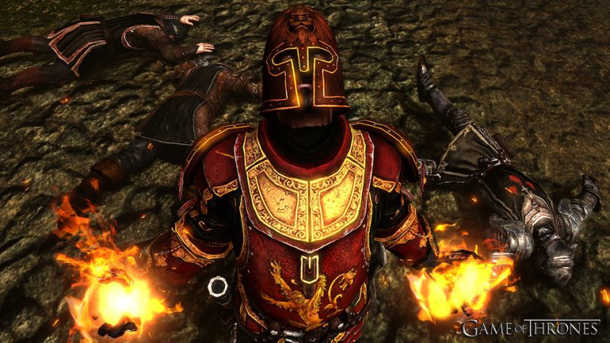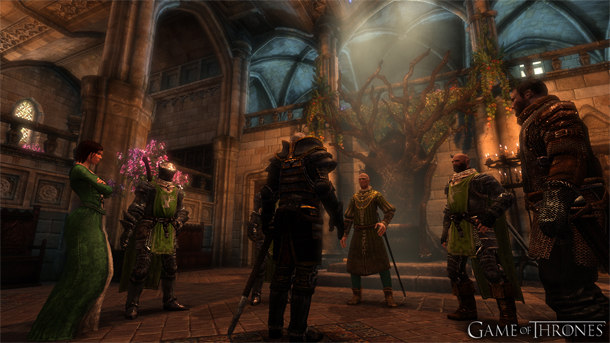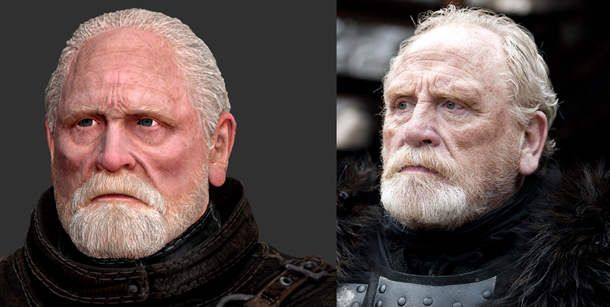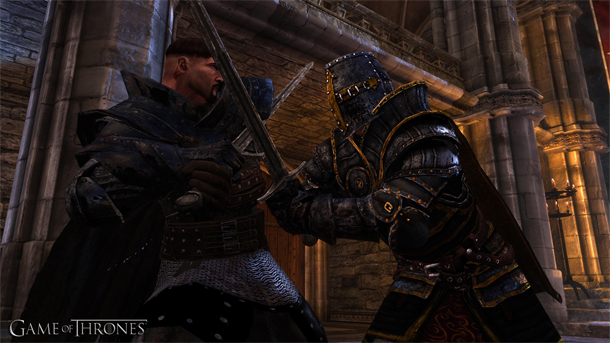Boom boom boom.
Chapter 51 of George RR Martin’s A Storm of Swords — the third book in his Song of Ice and Fire series — is perhaps his most infamous, and yet possibly his most beloved. The emotional roller coaster that takes place in the span of a few pages often leaves readers in a vulnerable state, wiping clean any predictions they may have for whatever happens next in the world of Westeros. (It was so emotionally difficult to write for Martin that he waited until the rest of the book was finished before going back to and completing the section.)
The buildup begins more than 20 chapters back with descriptions of overcast skies slowly churning into ominous rain clouds that provide a constant, perpetual static as a backdrop. The pitter-patter of water droplets becomes a recognizable “boom boom boom” drum beat, a crescendo, that culminates in thunderclaps of music and steel. Martin meticulously plans the notes to his song, placing every instrument and bard in the right place with the right sound… or weapon.

A Game of Thrones RPG, the new video game based on a mixture of books and television program, begins its process much in the same way. There is a storm coming, there is rain, and there are a few thunderclaps off in the distance, there is misery.
But it never really makes it out of being just an overcast drizzle.
Boom boom boom.
I need to admit right now that I never once was expecting the quality or breadth of a Skyrim. The world of Westeros is larger, more complex, more beautiful than that of the Elder Scrolls, and translating that — and making it fit within the canon — would be next to impossible to do perfectly. A Song of Ice and Fire has reached Watchmen territory; it’s a lucrative property that every developer thinks they know how to treat, but can never properly do it justice. I was expecting nothing more than a pop song that had enough oomph to break into the Top 40, capitalizing on the property by using it as an injection into a remix of an existing game engine.
The song that Cyanide are playing is actually more of a mashup, bringing things together that should theoretically work well but ultimately come off as piecemeal. The song isn’t quite finished yet.

It begins with a shot of familiarity. HBO’s theme song for the series plays over a static home screen, the words “press start” lightly scribed near the bottom of the show’s title block. Images of the Iron Throne or golden dragons adorn almost every free space. The opening scenes mimic the snowy setting of the book’s prologue, taking place near the Wall. The first conversations are centered around the Night’s Watch, honor, and betrayal — a sort of homage to Ned Stark’s role at the onset of the book as protector of Winterfell and keeper of the its laws.
As the two main characters are introduced over the course of the next few hours in the original story, they begin a dance that has their paths split and intersect, passing and dosadoing with each other as permitted. The ideas used in how the plot unfolds are pure Martin: political intrigue and personal humility underscore sometimes extravagant twists. When the unexpected ultimately arrives at the end of the game’s long, repetitive dance, it plays out like a chorus adapted from his previous works. We know something is going to happen to someone, and we’re very nearly drained from the agony of waiting, but it’s entertaining to see it all take place the way that it does in the final stanza.
Thrown against the backdrop of the ever-increasing wildling attacks at Wall and the events of the first book and television series, the game runs in parallel to that which we’ve come to know to shape the series. Martin made it a point that he did not want to mess with the canon, and did not want players to feel like they would be locked in to a predefined and predictable on rails narrative. A Song of Ice and Fire is meant to be epic storytelling. By taking place simultaneously with those events, but unable to take action in them, it becomes easy for the game’s narrative to make our actions feel inconsequential. Threads that should weave us into the canon are easily missed (or poorly implemented) and most of the known characters make only brief appearances, if at all. I want to be a part of THE Night’s Watch, not A Night’s Watch. It seems like the Song is the same, but it’s played by a Beatles cover band instead of John and Paul.
Boom boom boom.
The feeling of “almost there, but not quite” spills over into other facets of the experience.
The game presents us with the task to create/modify our character, but doesn’t tell us why or how. The value of some of the categories aren’t explained until later in the game, no matter how actually useful they are (and they are, but we don’t find out until we advance our characters enough). The questing system is filled with fetch quests and escort missions, none of which are original enough to be fulfilling (or reward us enough to take part in). The visuals are meant to convey the impending downfall of the Seven Kingdoms, but the dirty textures and gray and brown color palette come off as muddy an unappealing. Slowly, as the game progresses, the assets become reused over and over again. In fact, some scenes even have several clones of characters in the background performing the same animations. This was commonplace when the Playstation 2 was around, but we’re in higher definition territory now and have much better processors.
A few of the characters are designed extremely well, both visually and canonically. Lord Jeor Mormont, the Commander of the Night’s Watch, looks an acts nearly identical to his television counterpart played by James Cosmo. Cersei Lannister and Varys are just as conniving and methodical as I’d imagine them to be. Even a few of the new characters have interesting tales and back stories that seem to fit within typical Martinesque design. The settings are recognizable, too. Castle Black and the Wall are ominous, dark, foreboding. King’s Landing is bright, colorful, and regal. They’re different enough to feel living characters in their own right, and provide a nice “night and day” feel to the experience. The amount of details that series fans will pick up on is a testament to Martin’s love of authenticity.

The game’s mechanics are based on great ideas that haven’t been quite fully realized. The promising conversation system, which revolves around the character’s thought process rather than words, is refreshing — and maybe rivals that of the Mass Effect series for feeling like my character is actually saying what is on his mind — but suffers from not resulting in engaging interplay. The action-oriented mechanics are fairly traditional, providing unique attacks that can be gained as our character develops, but they battle sequences leave us feeling almost too powerful. It’s not uncommon for me to run into a massive battle low on health, coming out victorious with nary a scratch.
Boom boom boom.
But the drum beat never changes. Games need to have some sense of reward to keep us going. A Game of Thrones prides itself on the misery of the characters and plot, never relenting in plucking the same strings over and over. It’s essentially too much of the same kind of misery, and at 30+ hours in length the game could have had some of the excess cut away. Even though it is enjoyable, the climax in AGoT takes far too long to get to hear and it forces us to endure much of the same chorus over and over. It’s not difficult to see where George RR Martin’s vision for the game stopped and the developers’ interpretation — mixed in with HBO’s adaptation — began.
Boom boom boom.
This review of a Game of Thrones was based on a copy of the game for the Xbox 360 sent to SideQuesting by Atlus, the publisher.



1 Comment